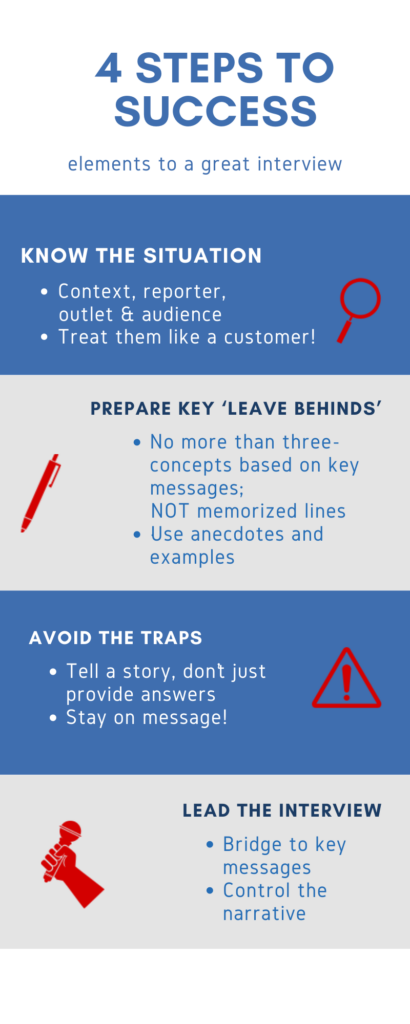Reports of media training’s death are greatly exaggerated. But in the COVID-19 era, it is different. Spokespeople are no longer focused just on the messages they deliver, but on their background scenery and performance of their technology.
As a former journalist, and now with more than 20 years in the public relations, I have conducted media training sessions effectively on Zoom, GoToMeeting and even Skype. The sessions are not only recorded, but can be reviewed in real time and adjustments can be made on the spot so when the real interview happens, spokespeople are ready and able to present themselves in the most professional way.
It is important to record these practice interviews of your spokesperson within the frame of their computer screen so they can actually see what the audience will see. Are they looking into the camera when answering the questions? Are they fidgeting?
 Make no mistake: companies who conduct media interviews virtually without the proper training could have a host of problems. Below are some key elements to keep in mind and ensure that 21st-century coronavirus-era media interviews go off without a hitch:
Make no mistake: companies who conduct media interviews virtually without the proper training could have a host of problems. Below are some key elements to keep in mind and ensure that 21st-century coronavirus-era media interviews go off without a hitch:
It’s About the Technology
- You will want to test your computer’s camera, sound, speaker and Wi-Fi connection, making sure everything is working properly.
- Mute notification sounds such as any incoming emails or texts.
- Use a headset, earbuds and external mic for better sound.
- Set up front and side-lighting to best illuminate the spokesperson face. Also prop up the laptop to ensure the camera is at eye level and they know where to look.
It’s About the Staging
- Without the right camera angle, lighting and background, spokespeople can look unprofessional, unprepared and uncomfortable.
- Clean up the background so that there aren’t any distractions. Keep the focus on the person-not the extended library of books on the wall behind them.
- Dress professionally. (We strongly suggest professional attire from head to toe, just in case!)
- Facial expressions – once hidden on the other end of phone conversations – now are in plain view. Every interview should be executed as if it is a televised event.
It’s Always About the Messaging
- More than ever, spokespeople need to be clear about what they want to say in an interview and how to say it while staring into a laptop camera. This can at times be daunting because they do not have the immediate reaction they would get from the interviewer if done in person.
- Ensure your key messages are original, short and appropriate for the specific media outlet audience.
- When you are clear on your key messages, you can refer to them throughout the interview to emphasise your points and deliver a strong narrative.
Even though we are playing by a different set of rules these days, proper media training remains paramount. It is important to be able to adapt and apply the traditional best practices to work in this ever evolving digital and socially distant world.

